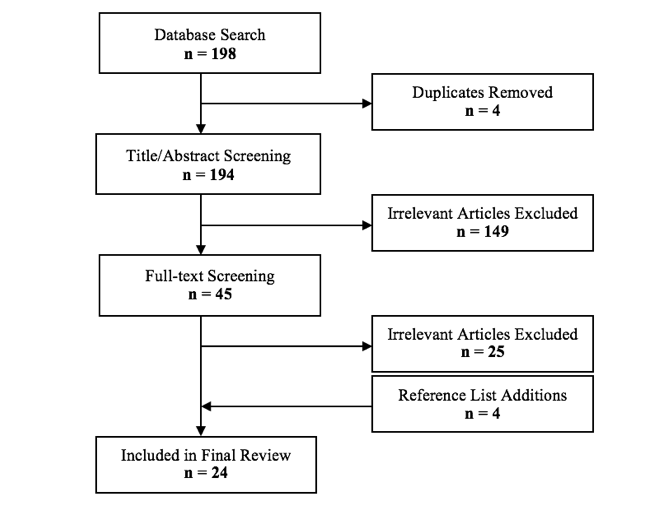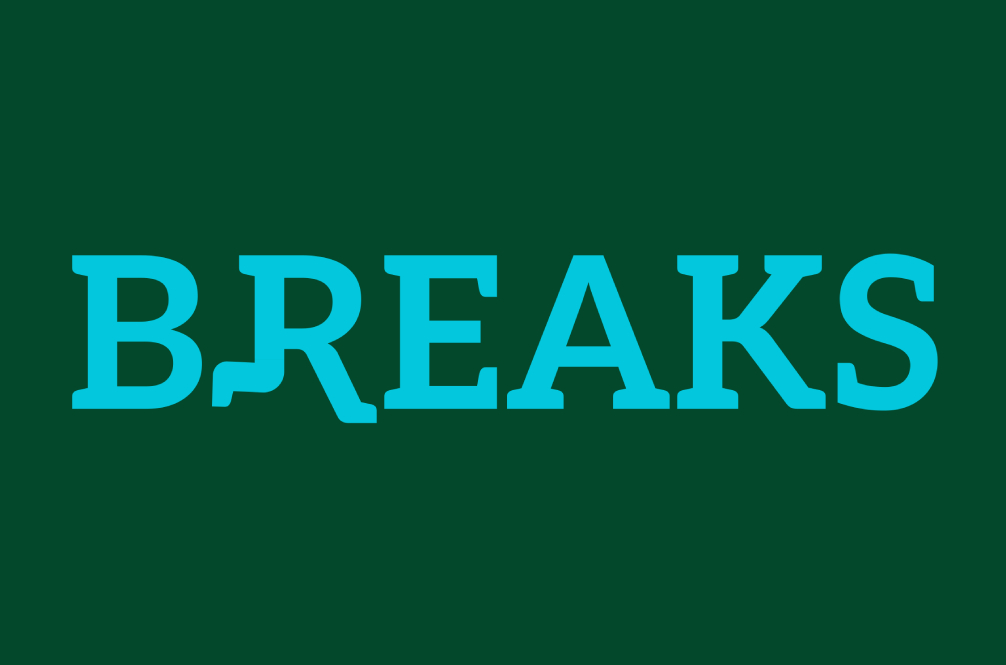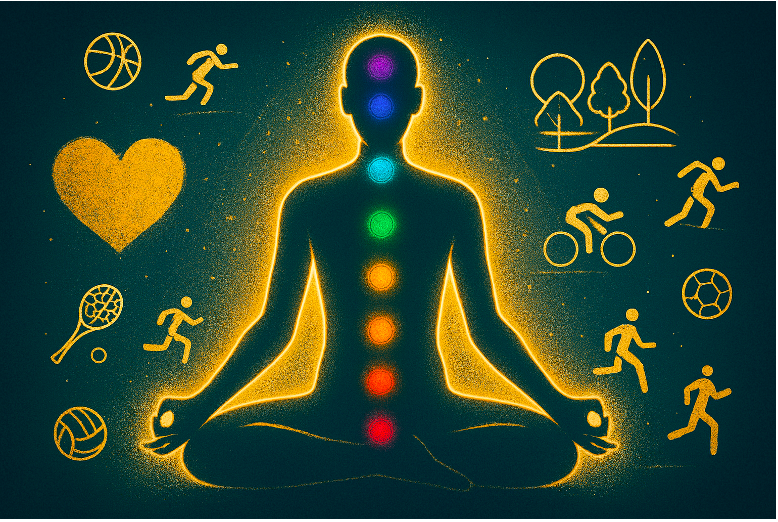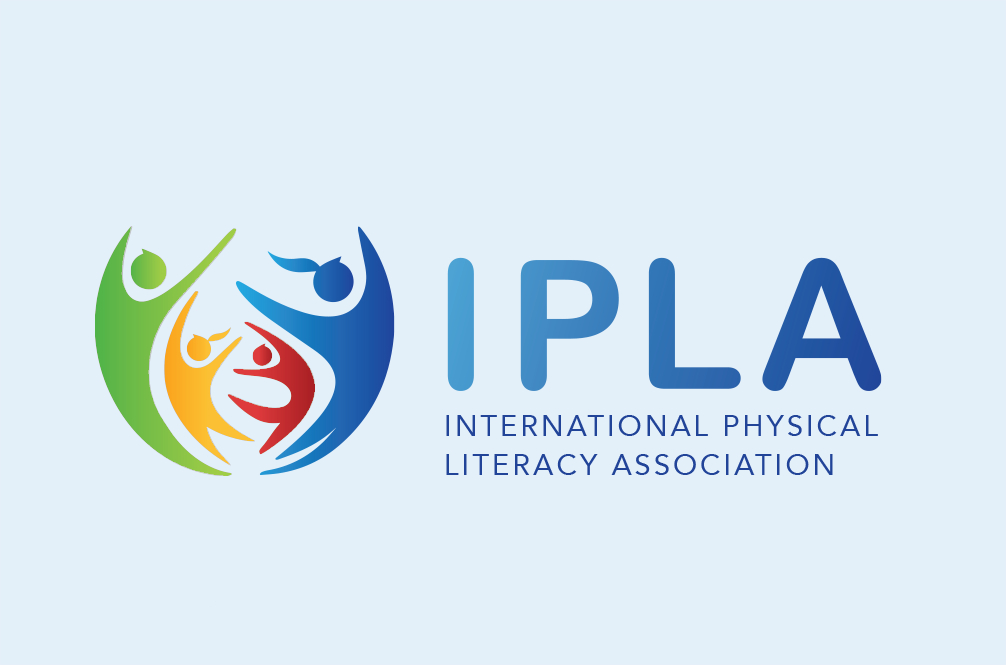Physical Literacy Scholarship within Canada: An Overview of Literature
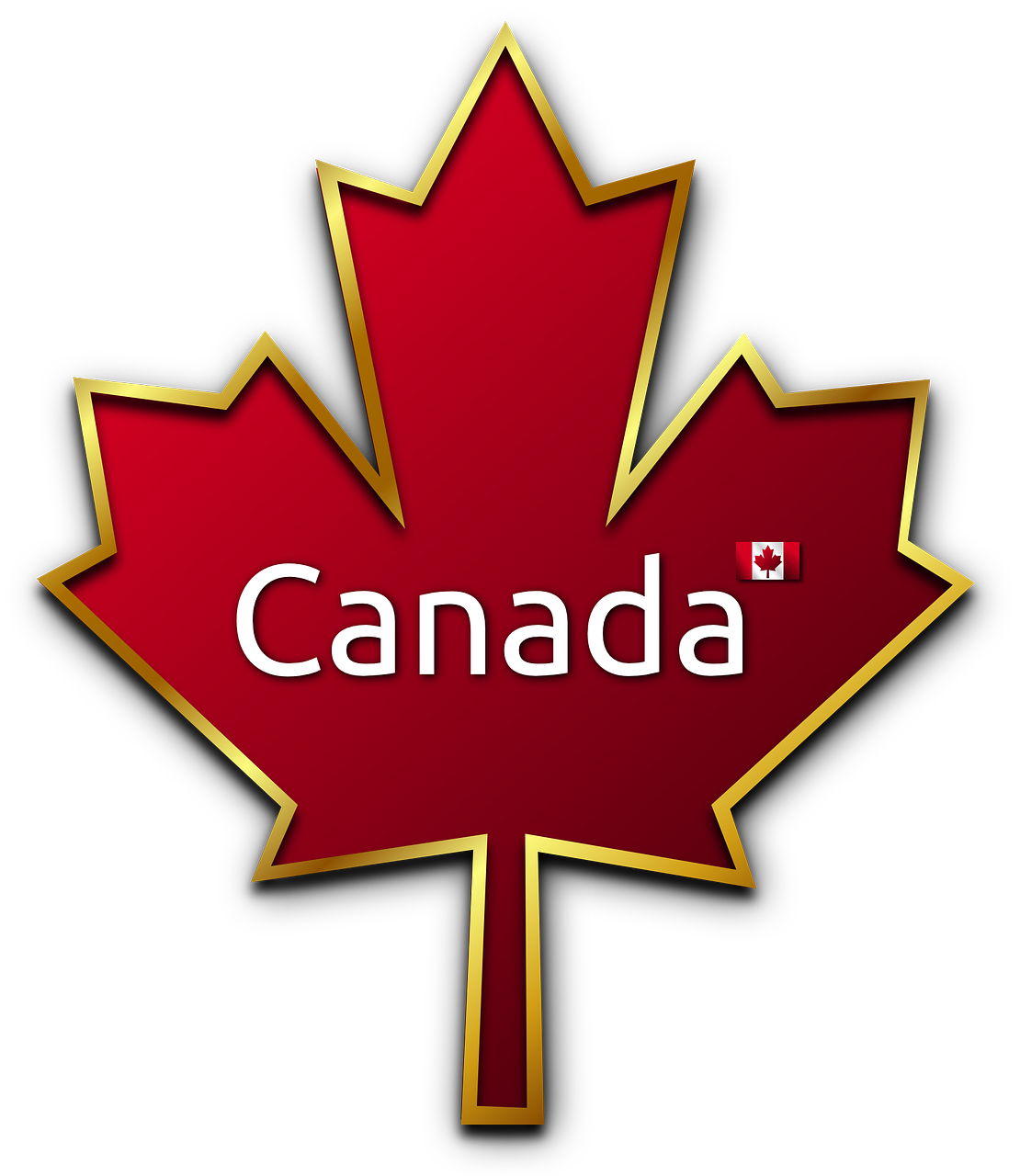
An increasing number of Canadian scholars have been engaging in physical literacy-related scholarship in recent years . By way of their presence at national conferences or summits that focus upon physical literacy, their physical literacy-related presentations at these sorts of events, and their peer-reviewed publications, these Canadian scholars have been active participants in emerging body of important scholarship. A recent review of these publications highlights these efforts . Since 2009, Canadian scholars have contributed no fewer than 24 peer-reviewed physical literacy papers to the growing body of research. In an effort to highlight the scope of these Canadian scholars’ work, following is a brief overview of a search and summary of their contributions.
A literature search of “physical literacy” and “Canada” (all text) was conducted using three common electronic databases: ProQuest Research Library (ProQuest), SAGE Journals Online, and SPORTDiscus. The databases were chosen because, together, they encompass a comprehensive catalogue of education and physical education literature. The searches were limited to English, peer-reviewed journal articles published between 1 June 1987 and 1 June 2017 (a 30-year period). This initial search yielded 198 articles (194 once all exact and close duplicates were removed). The remaining 194 articles’ titles and abstracts were reviewed to determine if they were appropriate for further consideration. This process eliminated a further 149 articles. Finally, subsequent full-text screenings and searches of the remaining 45 articles’ references eliminated another 25 and added another four. This entire process is illustrated in Figure 1.
Figure 1. Review process and results
Table 1: Canadian Physical Literacy Scholars
| Author(s), Year | Journal | Research or Conceptual | Canadian Connection | Key Findings, Conclusions |
| Barrett & Winters, 2013 | Physical & Health Education Journal | Research – qualitative | Authors & Content | Some teacher candidates expressed the ‘affordances’ of physical literacy through the arts, like the ability to express emotion and show space. The focus on action and being mindful through music allowed students to develop an appreciation for the connection between mind and body. After incorporating and understanding the elements of dance, teacher candidates were better able to voice how they might apply dance in their own classrooms. This study demonstrated that teacher candidates felt more confident and able to share dance opportunities with K-12 students when given time to explore their personal experiences and make meaning through movement during their teacher education courses. |
| Corbin, 2016 | Research Quarterly for Exercise and Sport | Conceptual | Author & Content | Those interested in promoting physical literacy will have to show that the adoption of the term physical literacy provides a foundation for elite sport, public health, and physical education rather than merely being a term used to improve public perceptions. Institutions like the ones listed above, who are in the driver’s seat, will be responsible for demonstrating ‘blueprints’ that provide for consensus and facilitate development of evidence-based programs and assessments in physical literacy. The good news is that many groups are rallying around physical literacy and there appears to be a growing consensus concerning a definition and cooperation amongst institutions. |
| Corlett & Mandigo, 2013 | Physical & Health Education Journal | Conceptual | Authors & Content | Literacy in the physical sense is more than knowing basic movement skills; it is more about the ability to ‘do movements’ and know ‘what to do’ in diverse contexts of challenge. The authors discuss how to classify physical literacy in a similar way to literacy/numeracy in language, math, and music. Human movement has been more difficult to categorize and agree upon. However, there appears to be a consensus developing that there is the equivalent in skilled physical movement terms to an alphabet in language literacy or a set of numbers in mathematical numeracy or a scale in music, from which increasingly complex movements can be created and expressed. |
| Francis et al., 2016 | Journal of Physical Activity and Health | Research – quantitative | Authors & Content | Nineteen childhood physical activity/fitness experts completed a 3-Round Delphi process to revise the Canadian Assessment of Physical Literacy (CAPL), a tool to monitor children’s physical literacy based on fitness, activity behaviour, knowledge, and motor skills. Delphi participant consensus was achieved for 64% (47/73) of statement topics, including a revised conceptual model, specific assessment protocols, the importance of longitudinal tracking, and the relative importance of individual protocols and composite scores. Revised CAPL is appropriate for monitoring children aged 8-12 and objectively measured domains (i.e., daily behaviour and physical competence) have higher relative importance. |
| Gallant et al., 2011 | Physical & Health Education Journal | Conceptual | Authors & Content | There is a scarcity of certified coaches in Canada, which highlights a scarcity of opportunity for Canadian youth to develop physical literacy. There is a reciprocal relationship between elevated levels of physical literacy and certified coaching. Sport must be given back to certified coaches as a key to getting Canadian youth back ‘in the zone’. Therefore, opportunities for sport as play must be re-established as more than just ‘extra-curricular’ activity. The study proposes that physical literacy is most effectively conceptualized within a philosophically holistic framework. |
| George et al., 2016 | Sports | Research – quantitative | Authors & Content | This study examined the impact of Active Video Games (AVGs) on children’s (age 6-12, N = 15) physical literacy. For six weeks, children played one of four pre-selected AVGs (minimum 20 min, twice per week). Results indicated a near significant improvement in aiming and catching (p = 0.06). Manual dexterity significantly improved in males (p = 0.001), and females felt significantly less pressured to engage in physical activity (PA) (p = 0.008). Overall, there appears to be some positive impact of an AVG intervention on components of physical literacy. |
| Giblin et al., 2014 | Sports Medicine | Conceptual | Content | There is no robust empirical tool for evidencing skill learning in the physical movement component of physical literacy. Combining the advances in understanding in neuroscience underpinning physical skill learning and expertise with exergaming technology could provide accessible, appropriate methods for both teaching and monitoring of physical literacy education. The current standardisation of monitoring methods shows progression in optimising evidence-based physical literacy education, but more research is needed. |
| Hyndman & Pill, 2017 | European Physical Education Review | Research – quantitative and qualitative | Content | The overall findings from the Leximancer text mining analysis of the Twitter chat reflected physical education teachers’ collective focus on the facilitation of the game based approaches (GBA) as a ‘pedagogical gate-keeper’ with the prominent concepts being teacher-related. Strong relatedness was revealed between the concepts of ‘teaching’ and ‘learning’ with ‘questioning, which is a central component of GBA. When specifically examining the core concepts of the Twitter conversation of ‘TGfU’ and ‘game’, strong relatedness was identified to ‘students’ and ‘players’, reinforcing the GBA as a model to suit the experience of students, emphasising the development of student thinking and game intelligence. |
| Jurbala, 2015 | Quest | Conceptual | Author & Content | The author has argued that physical literacy is a new name for an innate human capacity, rather than a new thing in itself. Advocates for physical literacy are not arguing that physical literacy exists, but that improving one’s physical literacy is both enabling and protective; it is claimed that individuals with more advanced physical literacy are more able to participate in and enjoy physical activity, as well as less likely to suffer acute exercise-related injury and inactivity-related illness, setting up a virtuous cycle that supports enhanced quality of life. This article also proposes a theoretical model that can be used as a basis for linked, multi-disciplinary research. |
| Larouche et al., 2013 | Applied Physiology, Nutrition & Metabolism | Research – quantitative | Authors & Content | This study sought to quantify the relationships among physical PA, health-related fitness, and motor skills in children (grades 4 to 6), and to determine whether specific tests of fitness or motor skills are independently associated with objectively measured PA levels. Step counts were significantly correlated with predicted aerobic power (r = 0.30), obstacle course time (r = −0.27), obstacle course score (r = 0.20), plank isometric torso endurance (r = 0.16), and handgrip strength (r = 0.12), but not with waist circumference (r = −0.10), trunk flexibility (r = 0.10), or overweight status (= −0.06). In the multi-variable model, predicted aerobic power, obstacle course time, testing season, gender, and the predicted aerobic power by gender interaction were significantly associated with step counts, explaining 16.4% of the variance. Specifically, the relationship between predicted aerobic power and step counts was stronger in girls. These findings suggest that aerobic fitness and motor skill are independently associated with children’s PA. |
| Lloyd, 2016 | Journal of Teaching in Physical Education | Research – quantitative | Author & Content | Physical and health education teachers might not have the luxury of planning cross-curricular activities with language arts teachers to tap into students’ thoughts and feelings; therefore, it is essential that we teach in ways that are attuned to our students’ inner sensations, from discomfort to pleasure, and encourage them to modify their movement accordingly. To encourage children to become active for life, this study suggests that we need to attune to such moments and the potential they have to motivate young movers. Encouraging teachers and students to think about any movement through various lenses as detailed in the F2F model as well as various cross-curricular modalities thus has the potential to help teachers break from the dominant ‘physical-education-as-sport-technique’ paradigm. The F2F model and curricular support tools that have emerged from this study may serve as an example for those who are looking for creative and educative ways to nurture the development of physical literacy. |
| Longmuir & Tremblay, 2016 | Research Quarterly for Exercise and Sport | Conceptual | Authors & Content | The purpose of this article is to highlight 10 important research questions related to physical literacy with the hope of fueling future research activity and debate. Research needs are summarized within four themes: monitoring physical literacy, understanding the physical literacy journey, enhancing physical literacy, and the benefits of physical literacy. Specific research questions relate to identifying measurable aspects of physical literacy and how they change across cultures and throughout the life span, as well as understanding the individual and environmental factors that describe the physical literacy journey. |
| Langmuir et al., 2015 | BMC Public Health | Research -qualitative | Authors & Content | A confirmatory factor analysis using data from 489 children with complete raw scores supported a model with four domains: engagement in physical activity (active and sedentary), physical competence (fitness and motor skill), motivation and confidence, and knowledge and understanding. Raw domain scores followed expected patterns for age and gender, providing evidence for their validity. Interpretive categories, developed from age- and gender-adjusted normative data, were not associated with age indicating that the CAPL is suitable for use across this age range. Children’s gender was associated with the physical competence, motivation, and engagement in physical activity domain scores, indicating that further research is required regarding the gender adjustment of the raw CAPL scores. CAPL domain and total scores were statistically significantly associated with teacher ratings of the child’s motivation, attitudes, fitness, skill, and overall physical activity. |
| Mandigo et al., 2009 | Physical & Health Education Journal | Conceptual | Authors & Content | The following is a proposed working definition of physical literacy that is intended to resonate with physical educators from across Canada in order to bridge a gap that has traditionally existed between sport and physical education: “Individuals who are physically literate move with competence in a wide variety of physical activities that benefit the development of the whole person.” The first part of the sentence provides the rationale regarding why it is important to be physically literate; it benefits the whole person (physical, cognitive, affective, etc.). Thus, the working definition is intended to highlight the importance of physical activity to benefit physical (e.g., fitness and motor skills), cognitive (e.g., thinking, understanding, problem solving skills), social (e.g., positive peer interactions, communication, teamwork, cooperation), and affective (e.g., emotional, spiritual, and motivational) development. Finally, the term “wide variety of physical activities” is consistent with Sport Canada’s vision of physical literacy and is also consistent with current definitions of physical literacy. The reader is encouraged to think very broadly with regard to ‘wide variety’—far broader than just popular sports but also to lifelong physical activities. |
| McCaffrey & Singleton, 2013 | Physical & Health Education Journal | Conceptual | Authors & Content | In this article, the authors are interested in the concept of “physical literacy” and they try to determine how the particular meaning given to physical literacy can influence the perception of skills within the framework of physical education classes. The authors attempt to establish how the various definitions of physical literacy influence the perception of children’s skills during physical education classes and argue that in order to nurture a sense of self-worth, adequacy, and perceived competence it is necessary to focus on the facilitation of needed experiences for children and not the functional outcomes of exercise. When placing the emphasis too much on functional outcomes, the comparisons and small humiliations that lead to perceptions of incompetence in physical education are harmful to a student’s relationship with his/her body. The desire is that physical educators across Canada will embrace this shift and lead their students to live lives filled with activity, fun, and the desire to progress to new and different experiences. |
| Ragoonaden et al., 2012 | Revue phénEPS/PHEnex Journal | Research – quantitative | Author & Content | Findings were broken into four physical literacy categories: educational behaviours (physical), educational experiences (emotional reactions, intuitions, thoughts), educational cultures, and educational systems (curriculum, school policies). Educational behaviours: by the end of the first week, students seemed to remember the flow and were doing the poses before the instruction. Educational experiences: journal responses indicated that approximately 75% of students indicated that they felt good, comfortable, or happy and enjoyed the Yoga practice. Educational cultures: the Yoga sessions had a positive impact on interpersonal relationships between the students and between the teacher and her students, creating a shared experience (coming together in silence, learning new poses). Educational systems: Yoga left teachers and students feeling relaxed and administration bought yoga mats for the school and expressed incorporating Yoga as a way to meet daily physical activity outcomes. |
| Robinson & Randall, 2016 | Measurement in Physical Education and Exercise Science | Conceptual | Authors & Content | The authors looked at three physical literacy assessment tools in Canada (Passport for Life, PLAY [PLAYfun], and CAPL) and rated them on a 4-star scale based on usability, trustworthiness, and fidelity to Whitehead’s original physical literacy model. For usability, all three were found to be very time consuming and required too much commitment for an assessment that does not necessarily have much practical use. For trustworthiness, there were no peer-reviewed publications reporting on the trustworthiness of the assessment resources (besides three for CAPL), which leads to concerns of whether or not they actually measure what they are intended to and if they can record accurate results over time. For fidelity, Passport for Life is best suited to provide an emerging picture of a student’s physical literacy, including discussion on students’ activity levels, motivation, confidence to participate, and perceived competence. |
| Roetert & Jeffries, 2014 | Journal of Physical Education, Recreation and Dance | Conceptual | Content | The authors believe that it would be wise for the US, their home country, and US physical educators to embrace the concept of physical literacy as they move into the future. They believe that embracing physical literacy as an outcome will not only align the US goals with those of many other countries but will also help the US to enhance physical education, physical activity, and sport programs throughout the country. |
| Sheehan & Katz, 2010 | Physical & Health Education Journal | Research – quantitative | Authors & Content | Six categories of intrinsic motivation are readily apparent in active video games: Control (games are individualized and children are free to pause, restart, and end at will; Challenge (progressive levels of increased difficulty provide users with periodic accomplishment and setback); Curiosity (many video games are designed for a child to achieve objectives in a number of different ways); Creativity (the virtual environment of exergaming provides children with the ability to take risk-free chances); Constant Feedback (through video games, players receive constant details about their progress); Competition (in video games, children can pick their level of opposition to ensure their competitive experience is both rewarding and demanding). Exergaming could provide an opportunity for those children who are not progressing at the same rate to develop fundamental movement skills and become confident enough in their abilities to pursue physical activity outside a virtual environment. |
| Sheehan et al., 2016 | International Journal of Sport Management, Recreation & Tourism | Conceptual | Authors & Content | The authors are creating a multi-layered functional physical literacy (FPL) framework to suit the needs of recreation programmers, instructors, and parents to ensure the delivery of high quality programs that are developmentally appropriate. This recreation-centred contribution will maximize the reach of physical literacy education for the purpose of increasing PA. The FPL framework will be designed for parents and recreation leaders who play a role in helping children and youth lead active lifestyles outside of school and organized sport settings. The FPL framework will be presented on a dynamic website platform that provides a compendium of knowledge for a variety of audiences. |
| Stanec & Murray-Orr, 2011 | Revue phénEPS/PHEnex Journal | Research – quantitative and qualitative | Authors & Content | The two-fold purpose of this study was to: 1) explore elementary generalists’ perceptions related to integrating physical literacy concepts into their classrooms; and 2) explore elementary generalists’ perceptions related to collaboration with physical education specialists. Elementary generalists reported feeling overwhelmed with crowded schedules, inadequate space, a lack of administrative and specialist support, and the pressures of standardized tests in subjects other than physical education. The findings showed that teachers place a high priority on their students’ health and want to help provide them with opportunities to be physically literate. The timing is right for decision makers to act and listen to these voices as teachers are realistic about the health crisis of physical inactivity in North America and appear motivated to provide more opportunity for our citizens to grow into physically literate members of society. |
| Tremblay, 2012 | Canadian Journal of Public Health | Conceptual | Author & Content | The author suggests that the diversity and intensity of activity addressing the childhood obesity and physical inactivity “epidemic” in Canada is encouraging and must be maintained and enhanced. To achieve success and to have a positive influence on the health of Canadian children and the environments where they live, learn, and play, interventions and policy changes will need to be developed, implemented, monitored, and evaluated; recommendations will need to be acted upon; ongoing research and surveillance will be required; and clinical practice will require adaptations. All sectors (governments, industry, health care, media, communities, schools, and families) must participate in an aggressive, informed, and sustained movement to recalibrate the behaviours of Canadian children to achieve sustained and pervasive healthy living outcomes. |
| Physical & Health Education Journal | Conceptual | Authors & Content | To facilitate the uptake and impact of the “physical literacy movement” the authors propose the development and widespread implementation of the CAPL. If physical literacy is to become a key outcome of physical education curricula, which the authors firmly believe should be the case, appropriate metrics must be in place to evaluate the key domains of physical literacy. In order for physical education or physical literacy to gain this type of prominence within the greater education context, it must be measured. At the moment, there is no comprehensive, objective, empirical, or valid measurement protocol to assess the physical literacy movement and this absence limits and diminishes the potential impact of quality physical education in Canada. The authors propose that the Canadian Assessment of Physical Literacy (CAPL) will help to fill this gap. |
Authors: Daniel, B. Robinson, Randall, L. & Sheehan, D.
Robinson, D. B., Randall, L., & Sheehan, D. (2018) Physical Literacy Scholarship within Canada: An Overview of Literature. International Physical Literacy Association. Available at:

